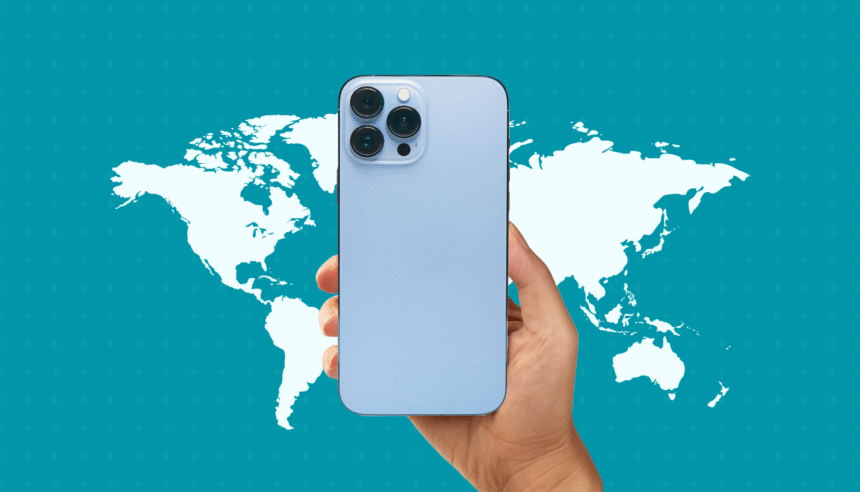When was the last time an iPhone announcement made you genuinely excited? If you’re struggling to remember, you’re not alone. Apple’s latest iPhone 16 brought incremental updates while competitors launched foldable screens, 200MP cameras, and sub-$300 flagship killers. With global smartphone sales declining and consumers keeping their phones longer than ever, Apple faces an uncomfortable truth: brand loyalty has its limits, and those limits are being tested by innovation happening everywhere except Cupertino.
The company that once revolutionized how we communicate, work, and live is facing its biggest challenge yet: a market that no longer waits for Apple to innovate. As iPhone sales plateau and competitors deliver flagship features at half the price, we’re witnessing what might be the end of Apple’s smartphone supremacy—or the beginning of its most crucial reinvention. For the first time in over a decade, Apple isn’t the world’s most shipped smartphone brand.
The Numbers Game: Smartphone Market Share Reality Check
According to Canalys, in Q1 2025, Samsung led the global smartphone market with a 20% share, while Apple held 19%, reflecting a more balanced share of the global smartphone market. While Apple enjoys a strong share in the US and Japan, India and Southeast Asia present a different picture altogether. In these nations, budget-conscious buyers prefer Android players that offer feature-rich products at reasonable prices.
Revenue-wise, Apple remains ahead, thanks to its premium pricing and high margin. But when it comes to unit volume, Android OEMs collectively ship more units than iPhones. The gap between smartphone market share by units and profit explains Apple’s continuing financial lead despite tough competition.
Has Apple’s Innovation Stalled?
Recent versions of iPhones have stoked controversy over a potential slowing of Apple’s innovation. While Apple remains at the forefront in chip performance and ecosystem integration, its design and feature updates increasingly become incremental. This opens the door for competitors to stand out.
Companies such as Samsung and Google are leading the pack when it comes to camera technology, AI, and bendable screens. Buyers today compare the latest iPhones to Android phones not only on performance but also on perceived innovation per dollar spent. While Apple still leads in integration, shifts in consumer electronics trends show competitors closing the gap.
Why Apple’s Ecosystem Still Rules
What most singularly distinguishes Apple is its unparalleled ecosystem. From iCloud to AirPods and the Apple Watch, Apple delivers a seamless user experience, an aspect that rivals cannot match. The ecosystem creates deep brand loyalty based on compelling features such as iMessage, Find My, and continuity across devices.
Services such as Apple Music, iCloud, and Apple TV+ are contributing more and more revenue, which offsets any weakness in iPhone sales trends. These lock-in effects strengthen Apple, with less likelihood of switching even if hardware innovation slows.
Meet the Brands Giving Apple a Run for Its Money
The smartphone market is more competitive than ever. Apple competitors such as Samsung, Xiaomi, and more recent players like Nothing are innovating at a frenetic pace. They’re offering good phones with groundbreaking selling points, from foldable displays to transparent screens.
With stronger pricing and occasional feature upgrades, those brands appeal to price-conscious buyers and even convert long-term iPhone purchasers. In the Apple versus Android war, the feature gap keeps decreasing-compelling Apple to differentiate based on more than appearance and brand.
What Consumers Really Think
Consumers today are rethinking what matters most in a smartphone. While brand reputation still plays a big role – impacting around 70% of purchase decisions – more people are prioritizing tangible features like camera quality, battery life, and even sustainability. In a market flooded with feature-packed Android alternatives at lower price points, the question many are asking is: does Apple still offer enough to justify the premium?
Why China Could Make or Break Apple
China remains a challenge and an opportunity for Apple. While it is one of Apple’s largest markets, local brands like Huawei, Xiaomi, and Honor are gaining share with competitive prices and localized features.
In addition, geopolitical tensions and heightened regulatory scrutiny could impact Apple’s manufacturing and sales operations. To Apple, sustaining strong performance in China requires adapting to a dynamic, high-risk environment with consumer loyalty uncertainty.
Will AI Decide the Future of Smartphones?
Artificial intelligence is the next battleground in the mobile technology market. AI-specific functionalities like AI photography, voice assistants, and predictive interactions are fast becoming table stakes.
Apple’s AI strategy focuses on privacy and ecosystem coherence, while others, such as Google, are more experimental and open. As users become increasingly interested in AI features, Apple will need to find a way to balance innovation and its fundamental mission of user privacy-possibly shaping the next era of Apple innovation.
Are Premium Phones Still Worth It?
Is Apple losing its grip on the smartphone throne? Well, when you mix rising iPhone prices with increasingly wallet-friendly alternatives, the answer might be: kind of. While Apple still reigns in premium segments, brands like Samsung, Xiaomi, and OnePlus are winning over price-sensitive buyers with top-tier features at half the cost. In fact, according to Counterpoint Research, Android brands captured over 80% of global smartphone shipments in 2024, while Apple’s market share dipped slightly due to slower demand for high-end models. With mid-range phones now sporting triple cameras, fast charging, and sleek designs, many consumers are asking, “Why pay more?” That said, Apple loyalists still swear by the ecosystem, but let’s be real—price tags matter, and the competition is catching up fast!
What’s Next for Apple in the Smartphone Market?
Apple still holds a strong position, but the way people choose smartphones today is shifting, and fast. It’s stronghold on the smartphone market isn’t built on flashy upgrades – it’s powered by its rock-solid ecosystem, loyal user base, and growing revenue from services like iCloud, Apple Music, and the App Store.
The company’s integrated ecosystem, high customer loyalty, and service revenue provide key strengths. However, the next years will challenge Apple’s capacity to adapt to shifting market dynamics, disruptive Apple competitors, and changing consumer needs.
The Bottom Line on Apple’s Smartphone Future
Apple is still in the lead-but on shaky ground. Smartphone market dominance is marked by strength and vulnerability. Brand dominance and depth of ecosystem stay unmatched, yet Apple’s competitors are becoming more aggressive and innovative.
Whether Apple regains its stranglehold or splits up, more of the focus rests on the way it develops, listens to consumers, and handles economic and geopolitical volatility. One thing is certain: the smartphone game is just getting started-and your next upgrade decision may just be a reflection of where the winds are blowing.

Is Apple Losing Its Grip on the Smartphone Market
Global Market Share (Source: Canalys)
Apple’s Key Challenges (Source: Canalys : China, Canalys : India)
- China: iPhone shipments drop − 8% YoY
- India: shipment decline − 8% overall
- Foldables & AI-led Android competition
- Mid-range Android growth
Apple’s Strategic Strengths (Source: Times of India, Financial Times)
- Ecosystem loyalty (iMessage, iCloud)
- Services revenue growth
- Manufacturing shift to India
- China discounts up to $351
Market Trends
- AI-integrated smartphones
- Foldable popularity rising
- Longer device upgrade cycles
FAQs
- How does Apple’s environmental sustainability approach compare to other smartphone manufacturers, and does it influence consumer choices?
Apple is a sustainability leader, with ambitions for carbon neutrality and greater utilization of recycled materials. Although it is appealing to green shoppers, not every consumer places it ahead of price or features.
- What impact might Apple’s manufacturing diversification beyond China have on product quality and pricing?
Offshoring production to nations such as India and Vietnam can minimize geopolitical risk and longer-term expenses but may first impact quality control and the effectiveness of supply chains-potentially impacting prices.
- How are privacy features becoming a competitive differentiator in the smartphone market?
Privacy is a core principle of the Apple brand. Technologies such as App Tracking Transparency raise the bar. With increasing digital awareness, privacy can keep customers away from less secure options.
- Could foldable phones shake up Apple’s position in the smartphone market?
Foldables are gaining early adopters but are still niche. With Apple entering the space with its own offering, the category may be rewritten. Until that point, companies like Samsung have a head start.
- What role does the second-hand iPhone market play in Apple’s overall business strategy?
The secondary market for used iPhones broadens Apple’s penetration into price tiers and increased take-up of the ecosystem. Used iPhone sales don’t directly benefit Apple, but they boost ecosystem adoption through accessories and services.










